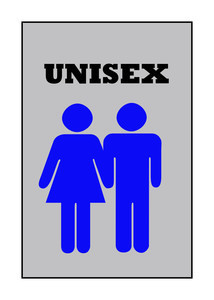“Why don’t you have a pocket?” Captain Carter, our Staff Platoon Commander (SPC) at The Basic School asks my roommate during a uniform inspection. He is inspecting one of our formal uniforms.
“I don’t know, sir.” Beth responds frustrated. “This is how it came from the Uniform Shop.”
“I’ve never seen one of these shirts with out a pocket, Jackson. What did you cut it off?” he teases keeping a straight face. Both Beth and I stifle our laughs.
“Sir, I really don’t know.”
“Why are your ribbons here, that doesn’t look right either.”
In utter exhaustion, after spending over an hour perfecting her uniform Beth blurts out, “Because I have breasts, sir.”
I cannot contain my laughter anymore and walk into the adjoined sleeping section of our barracks room.
“Oh, that’s right.” I hear Captain Carter say. “You have those …” I walk back in and watch our fearless leader blushing and at a loss for words.
“Boobs, sir.” Beth finishes his sentence and he finally cracks a smile before giving her a passing inspection.
While it is an obvious and simple fact that our bodies are different, the military treats them the same when it comes to combat uniforms and gear, as well as flight suits. The combat gear comes in generic sizes like S, M, L and the backpacks and other miscellaneous gear comes in one size fits all. But, one size fits all men is what it should really read on the labels.
As a woman in the military, you do anything and everything to avoid special attention, and because of that some women have opposed female specific uniforms and gear. However, body armor that doesn’t fit correctly, a bakpack with 80+ pounds of gear that rests on your hipbones rather than your waist, a flightsuit designed for a man’s anatomy making it impossible for a female pilot to relieve herself on long missions, and other design flaws can make the wearer less effective in combat or prone to injuries that put her out of combat altogether.
According to USAToday, “Female troops are about 20 percent more likely than their male counterparts to report musculoskeletal disorders, and poorly fitting body armor could be a factor.” I’d like to clarify for the author of that article that we don’t say anything because we don’t want to appear weak or whiny and would end up being told to “suck it up” if we did complain.
Finally, the Army is redesigning the gear. Well, that’s what the Christian Science Monitor boasted as a headline last week.
In the article, Douglas Graham, a spokesman for the Army’s Office of Soldier Protection and Individual Equipment states, “Some people would like to eventually make plates so it’s like ‘Xena: Warrior Princess’ and conforms to the shape of female soldiers.”
“Yet there are engineering challenges. The more curves the plates have, the heavier they get. It also creates potential weaknesses in the armor, like creasing a paper,” Lt. Col. Frank Lozano, who helps develop female body armor, adds.
While this is exciting news, it is important to understand that it will still be awhile until the redesigned armor is actually issued to female troops in the Army or other services. It is still in the testing phase with certain volunteer units in the Army and there is no funding in the Department of Defense (DoD) budget to produce the armor in mass production (once it passes all field testing). Furthermore, as a former supply officer and now a government contractor in defense acquisition and logistics, I can speak on behalf of the process from idea, to contract, to product to the troops – it is a very long, arduous and bureaucratic process. Defense budget cuts will also postpone fielding new gear to female troops.












